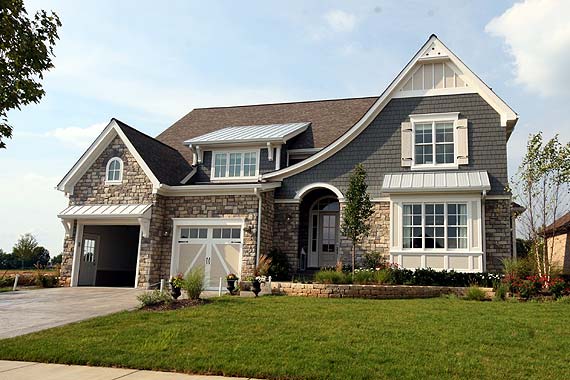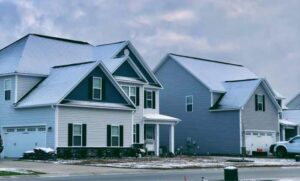One of every homeowner’s worst nightmares is water seeping into their home! Whether it comes in the form of a slow, sneaky leak or a sudden deluge, this can certainly wreak havoc on your property, leading to costly repairs, mold growth, and structural issues that compromise the safety and comfort of your home. So welcome to our homeowner guide to safeguarding against water damage. You’ll be glad that you read it!

Guide to Safeguarding Against Water Damage: 7 Tips
That said, with a few proactive measures, you can protect your home from water-related disasters. Here’s your ultimate guide to safeguarding against water damage including some of the practical tips and tricks you can use:
1. Inspect and Maintain Your Roof Regularly
Your roof is your home’s first line of defense against the elements. A small leak in your roof can lead to significant water damage over time.
Regular roof inspections, especially after heavy rain or windstorms, can help you catch problems early. While inspecting, look for missing, cracked, or curled shingles, and pay attention to any signs of water stains on your ceiling, which could indicate a leak. If you find any issues, address them promptly to avoid further damage.
2. Clean and Maintain Your Gutters
Gutters and downspouts are designed to direct rainwater away from your home. However, if they’re clogged with leaves, twigs, or other debris, water can overflow and pool around your foundation. This can lead to basement flooding or erosion of your home’s foundation.
It is essential that you keep them functioning properly. You can clean your gutters in 5 steps. Perform this task twice a year, especially in the fall when leaves are more likely to accumulate. Also, installing gutter guards can help reduce the frequency of cleaning.
3. Seal Windows and Doors
Windows and doors are common entry points for water. As time goes by, the seals around them can deteriorate, allowing water to seep in. You should make a point of checking the caulking and weather stripping around your windows and doors annually. If you notice any gaps or cracks, reseal them with high-quality caulk or weather stripping to prevent water from entering your home.
This simple step can also improve your home’s energy efficiency by keeping cold air out during the winter.
4. Waterproof Your Deck with Vinyl
Outdoor decks are a wonderful extension of your living space, but they are also exposed to the elements year-round. Without proper protection, water can seep into the deck’s structure, causing it to warp, rot, and weaken over time.
Investing in waterproof vinyl decking is a smart move when it comes to safeguarding your deck and the area underneath it. Some of the advantages of a waterproof vinyl deck over the traditional wood deck are that it is durable, low-maintenance, and designed to resist water, UV rays, and other elements.
Additionally, this one investment will not only extend the life of your deck but also help you maintain the aesthetic appeal of your home as it comes in a variety of colors and textures.
5. Install a Sump Pump in Your Basement
Basements are notorious for water issues, particularly in areas with a high water table or during heavy rains. Installing a sump pump in your basement can be a lifesaver in preventing water damage. A sump pump works by collecting and pumping water away from your home’s foundation, keeping your basement dry. You should make sure that you test your sump pump regularly and consider investing in a battery backup system to ensure it operates during power outages.
6. Install a Water Leak Detection System
A water leak detection system is a smart investment for any homeowner. These systems can detect leaks in your plumbing and alert you before they cause significant damage. Some even have automatic shutoff features that prevent a small leak from becoming a major disaster.
You can avoid water damage in your home by looking for a system that monitors all areas of your home, including your basement, bathrooms, and kitchen. Ensure that the system is also Wi-Fi-enabled as these systems can send alerts directly to your smartphone, so you’re always in the know.
7. Maintain Your Plumbing System
Leaky pipes, broken seals, and clogged drains can all lead to water damage inside your home. You must regularly inspect your plumbing system to help you catch potential issues before they become major problems.
You can do this by checking under sinks, around toilets, and near appliances like dishwashers and washing machines for signs of leaks. If you notice any dampness, water stains, or mold, address the issue immediately. Additionally, consider insulating your pipes to prevent them from freezing and bursting during cold weather.
Conclusion
Water damage may be a formidable foe, but with the right approach, it’s a battle you can win. By staying vigilant and proactive, you can protect your home from the devastating effects of water damage. Regular maintenance, smart investments, and a little extra effort can go a long way in keeping your home dry, safe, and comfortable. Remember, an ounce of prevention is worth a pound of cure when it comes to safeguarding your home.
If our guide to safeguarding against water damage has been helpful to you, please consider sharing it with a friend or family member. Thank you for visiting!



